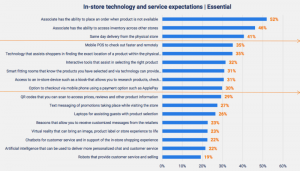Many B2B organizations feel that PPC doesn’t work for them, and some are right. But columnist Pauline Jakober urges these businesses to explore a few ideas before giving up on their paid search program.

Not infrequently, we hear from B2B businesses that have grown frustrated with the Google Search Network. Their marketing teams have been running Search Network campaigns for a while, but they’ve seen little return on their investment. And so they conclude that, as an ad network, the Search Network simply doesn’t work for them.
I can’t immediately dismiss the notion that the Search Network isn’t a good fit for some B2B companies (more on this later). But at the same time, we’ve turned around enough B2B Search Network campaigns to not give up so easily.
If your marketing team is struggling to get good (or even decent) Search Network results, you need to check a few items and explore a few ideas before abandoning your campaigns. Sometimes, the solution is simpler than you think.
1. The problem of landing page creep
Within tech companies, there’s a saying: feature creep is a great way to kill new products and projects. And the same kind of logic applies to landing page forms.
As a PPC agency, our clients take an active interest in our PPC landing pages. We know this because our email correspondence is often forwarded and/or copied to seven or more people and departments. And inevitably, each person on that email distribution list has his/her own ideas about what data to collect from prospects.
As a result, the number of fields on these landing pages tends to grow. A form that started with “name” and “email address” grows to include fields such as “title,” “city,” “ZIP code,” “industry” and more.
Before you know it, the form takes five minutes to complete.
My team member, Chelsea Tryon, came across this problem recently. One of her clients was seeing a major dip in PPC-generated leads. Upon inspection, she discovered the client’s landing page form had grown considerably in length.
She recommended that the client eliminate any unnecessary fields. They did so without issue, as they found that most of the data wasn’t being used.
And once they tightened up the form, the client’s lead numbers jumped back up — surpassing where they were before.
2. Where did you put that phone number?
Sometimes, a campaign course correction is as simple as fixing your phone number. I know this sounds overly simplistic. But you’d be amazed at how small, yet critical, components get overlooked when everyone’s thinking big picture.
This recently happened with a B2B client of ours. I was trying to persuade the client to add website call tracking to their site. In preparation, I did some investigating and discovered that the client’s telephone number was no longer prominently displayed in the top right corner of every web page.
Instead, the number had been moved (and the size and color changed), making it much harder to find.
Which leads us to the contentious issue of phones vs. forms in B2B.
Some observers argue that phone numbers aren’t all that important for B2B businesses. Given the more complex and protracted nature of the B2B sales process, potential customers prefer to initiate contact through a form rather than “pick up the phone.” No one, they argue, is going to order a million-dollar computer system over the phone.
There is some truth to that argument. But that doesn’t mean that some customers won’t want to initiate contact by calling. Maybe they want to ask a couple of questions. Maybe they want to know a little more about your product or service before giving you their email address.
Regardless of the reason, shouldn’t you make it as easy for them as possible?
But back to our client. In addition to the hard-to-find number, we faced another problem: a vanity phone number.
You’re already familiar with vanity numbers. They’re those phone numbers where letters are substituted for numbers to make the number more memorable. Such as 1-800-FLOWERS or 1-800-SOS-TAXI.
Unfortunately, AdWords call tracking won’t work with vanity numbers.
But, upon further investigation, we discovered that not all of the client’s website pages displayed the vanity number. Some inner pages displayed the old-style numeric number. So we added website call tracking anyway.
And guess what? We started tracking one lead per business day from these numbers. This may not sound like much, but considering we were generating these calls from a few random inner pages, imagine what we could generate from the entire site!
Of course, another reason we were so keen to implement website call tracking was to nail down lead attribution. Without call tracking in place, it’s difficult to determine what’s generating call leads. How are your customers finding you?
When we raise this issue with clients, they counter with, “We always ask where people found us.” But when they ask, customers usually respond “Google.” Okay, but does that mean organic search Google or PPC Google? We don’t know.
Without good lead attribution, it’s easy for PPC success to masquerade as PPC failure. So before you decide to shut down your “unsuccessful” Search Network campaign, you need to find out what’s really going on.
3. How expensive is too expensive?
When a marketing team or business owner concludes that “PPC doesn’t work for us,” what they often mean is that it’s too expensive. They look at the price of clicks for their keywords in the Search Network, and they simply feel they can’t get in the game. But that’s a conclusion that warrants closer scrutiny.
Sometimes, when clients complain about the cost of Search Network clicks, I’ll ask them how much they spent on their last trade show. Usually, they’re spending tens or hundreds of thousands of dollars for every show. And at the same time, they want to limit their PPC budget to $5,000 per month.
Sometimes, more substantial budgets bring more substantial results. Bigger budgets allow us to explore more strategies and tactics. And, as any PPC pro will tell you, behind every hugely successful PPC campaign is a lot of experimentation.
In contrast, some of our clients do run in high-cost-per-click circles. Taken out of context, the price tag does look expensive. But for them, the lucrative returns more than outweigh the cost of the clicks.
Of course, working out this kind of ROI calculation for your B2B business requires some legwork. How many leads is your campaign generating? And what is the value of each lead?
But if a larger PPC budget allows for more experimentation — which can allow for more success — then the effort is well worth it. And it puts the costs of PPC into perspective.
4. Consider alternative approaches
That said, there are some B2B businesses where the Google Search Network may not make sense. There, I said it!
For example, if you’re a new tech company, and your Search Network keywords are priced at $100-plus per click, and you’re competing with mega brands, then maybe you need to take a different, more creative approach.
One such approach could be to start with the Google Display Network (GDN) and make use of their ultra-specific targeting and cheaper clicks. Maybe combine the GDN with a compelling video on your site that explains who you are and what you do.
All of this will help build up your online presence. And over time, your branded traffic will grow, as will your remarketing lists.
Then, you can dip your toe into the Search Network, but limit your keywords to branded terms and long-tail search terms that are unique to your business and offerings.
Underlying this alternative strategy is a shift in mindset. Instead of asking, “What are our customers searching for?” you ask, “Who is our target customer?” and “What specific questions do they ask about our solutions?” And you use the answers to direct your strategy.
Don’t give up too early
It’s easy to conclude that the Search Network doesn’t work for your B2B business when you don’t get the results you want. But that doesn’t mean you and your marketing team should give up.
Sometimes, small changes can make a big difference. Sometimes, you can justify a larger PPC spend with lucrative returns.
And if nothing else works, it’s time to get creative.
[Read the full article on Search Engine Land.]
Some opinions expressed in this article may be those of a guest author and not necessarily Marketing Land. Staff authors are listed here.
Marketing Land – Internet Marketing News, Strategies & Tips
(65)
Report Post






